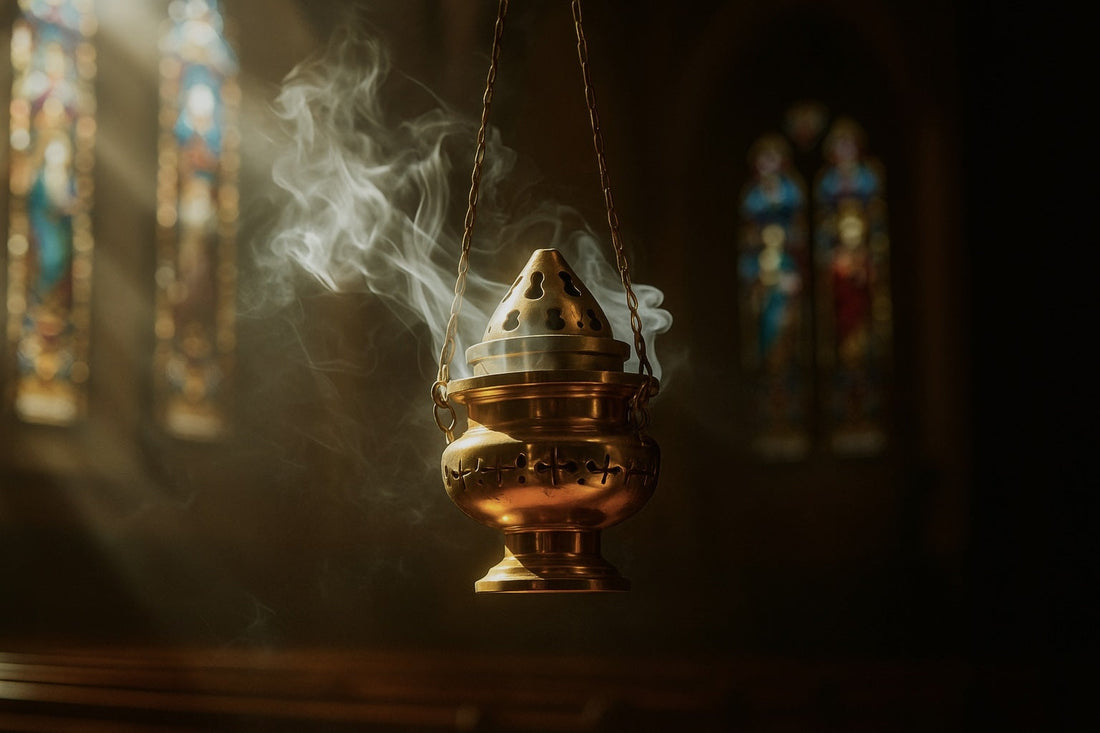
The Use of Incense in Christianity
Incense has long been associated with spiritual practices across many cultures and religions, and Christianity is no exception. From the Old Testament’s temple rituals to the sacred Mass in a Catholic church today, the use of incense in Christianity carries deep symbolism, biblical roots, and theological meaning.
In this post, we explore what the Bible says about incense, how it's used in Christian worship—particularly in the Catholic Church—and what it represents for believers around the world.
Incense in the Bible: A Symbol of Prayer and Holiness
The earliest references to incense in Christian tradition come directly from the Old Testament. Incense was central to Hebrew worship, especially in the Tabernacle and the Temple of Jerusalem.
In the Book of Exodus, God commands Moses to make a sacred incense blend:
“Take fragrant spices... and make a fragrant blend of incense... It shall be most holy to you.”
— Exodus 30:34–37 (NIV)
This incense was burned on the Altar of Incense, symbolising the prayers of the people rising up to God.
The New Testament continues this theme. In the Book of Revelation, incense appears again:
“Another angel... was given much incense to offer, with the prayers of all the saints on the golden altar before the throne.”
— Revelation 8:3–4 (NIV)
Here, incense is directly connected with intercessory prayer, suggesting a divine fragrance that accompanies human devotion.
Incense Use in the Catholic Church
The Catholic Church has preserved the tradition of incense use from its Jewish roots, incorporating it into liturgical ceremonies as a rich symbol of reverence, purification, and sanctity.
Incense is most commonly used in the following Catholic settings:
- Mass: Especially during high liturgies, incense is used to bless the altar, the Gospel, the Eucharist, the clergy, and the congregation.
- Funerals: The casket is incensed as a sign of honour and prayer for the deceased.
- Benediction and Eucharistic Adoration: Incense is used before the Blessed Sacrament to signify adoration.
- Holy Week and Major Feasts: Such as Easter, Christmas, and the Feast of Corpus Christi.
The tool used to burn incense is called a thurible (or censer), often swung on chains to distribute the fragrant smoke.
📖 “The use of incense in the Roman Rite of the Catholic Church is prescribed in the General Instruction of the Roman Missal and is deeply rooted in Christian tradition.”
— Catholic Encyclopedia
This practice is not only about sensory beauty—it reflects deep theological truths: that worship engages all the senses and that prayer is a holistic experience.
What Does Incense Represent?
In Christian symbolism, incense conveys several powerful ideas:
- Prayer rising to God: As mentioned in Revelation, the smoke visually represents prayers ascending.
- Purification: Just as smoke purifies the air, incense symbolises the cleansing of sin and sanctification of sacred space.
- Sacrifice and Worship: The act of burning incense mirrors the idea of offering something valuable to God.
- Presence of the Divine: Like the cloud of incense in the Holy of Holies, it reminds believers of God’s mysterious, sacred presence.
The use of incense is also a reminder of the incarnational aspect of Christianity—that worship isn't just spiritual but also physical, involving bodies, senses, and surroundings.
Is Incense Use Still Common in Modern Christianity?
In Roman Catholicism, incense continues to play a vital role, particularly in traditional and solemn liturgies. However, some contemporary parishes may use it less frequently due to practicality or sensitivity to allergies.
Other Christian traditions, such as Eastern Orthodoxy, also use incense extensively. In fact, their rituals are often even more incense-rich, with daily usage in monasteries and during icon veneration.
In Protestant traditions, incense is less commonly used today, though some High Church Anglican and Lutheran congregations preserve its use during worship.
Conclusion: A Scented Offering of Faith
Incense in Christianity is much more than tradition—it's theology in motion. It connects the early Church with modern worshippers, offering a tangible sign of reverence, mystery, and prayer.
Whether you're stepping into a centuries-old cathedral or reading about incense in the Bible, this sacred smoke continues to tell the story of a faith deeply rooted in both body and spirit.
